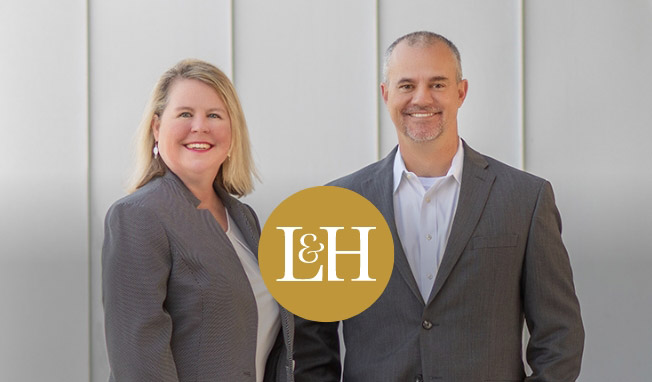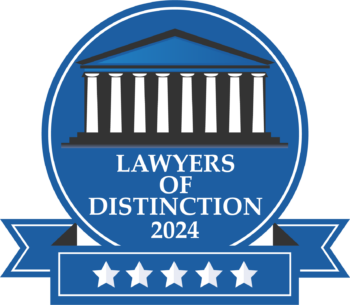Proving fault in slip and fall cases: what you need to know is essential. To succeed, you must show that a property owner’s negligence caused your injuries. This involves gathering evidence, understanding legal timelines, and knowing what kind of documentation to present.
Key Takeaways
- Negligence is crucial in slip and fall cases; property owners must maintain safe premises and can be held liable for neglecting hazards known or should-have-known.
- Gathering compelling evidence, including witness statements and medical documentation, is essential for substantiating claims and proving fault in slip and fall cases.
- Understanding legal timelines and consulting a personal injury attorney promptly can help ensure that victims meet filing deadlines and effectively navigate the claims process.
Understanding Negligence in Slip and Fall Cases
Negligence plays a key role in slip and fall cases. Property owners must maintain safe premises and can be held liable for injuries if they neglect this duty. They are expected to exercise reasonable care to eliminate or repair hazardous conditions, protecting all visitors.
Proving negligence involves demonstrating the property owner’s awareness of a hazardous condition, their failure to address it, or their role in creating it. The duration of the hazard’s existence is a key factor; prolonged neglect can strengthen a negligence claim.
The injured party needs to show the property owner did not uphold a reasonable safety standard and failed to address hazards promptly. Crucial evidence includes witness statements, maintenance logs, and security footage, all illustrating the owner’s negligence.
Deciding a property owner’s negligence depends on their knowledge or should-have-known awareness of the danger. This complex area of law demands a detailed grasp of property owners’ duties and actions to secure a successful claim.
Elements Required to Prove Fault
Premises liability is the legal concept that encompasses slip and fall accidents. To establish negligence in a slip and fall case, one must demonstrate the owner’s negligence and that the accident could have been avoided. This involves proving that a defective or hazardous condition on the property led to the accident and the subsequent injuries sustained.
Proving fault in slip and fall cases is often challenging. Property owners may argue the injured person shares or bears full responsibility. Thus, gathering strong evidence that clearly indicates the owner’s negligence and failure to maintain safety is essential in a slip and fall lawsuit.
Key elements to prove fault include showing the property owner’s carelessness directly caused the accident and subsequent losses. Crucial evidence includes witness statements, security footage, and incident reports.
Gathering Compelling Evidence
Compelling evidence is crucial for proving negligence in slip and fall cases. Witness statements, security footage, and incident reports can significantly bolster your claim. Visual evidence, like photographs of the scene and injuries, also illustrates the conditions leading to the fall.
Detailed documentation, including witness statements, boosts your claim’s credibility. Organizing all related documents, including medical bills, is vital for a strong case. Personal injury lawyers often consult professionals, like accident reconstruction specialists, for essential evidence.
Hiring a lawyer can significantly influence the outcome of your slip and fall case through effective evidence management. Timely evidence gathering is crucial, as delays can jeopardize crucial details. If no photographs were taken at the time, alternative methods should be used to gather necessary evidence.
The Role of Medical Documentation
Medical documentation is key in linking injuries to the slip and fall incident. These records detail injuries, diagnosis, and treatment, essential for proving the connection. Immediate medical care not only addresses injuries but also serves as crucial evidence.
Organized medical records are vital for accurately calculating immediate and long-term medical expenses. Lawyers use these documents to substantiate claims and negotiate settlements, showing the full extent of injuries and costs. Expert testimony can further clarify injury extent and its connection to the incident, strengthening the case.
Slip and fall incidents may result in chronic pain and emotional challenges, which can also warrant compensation. Comprehensive medical records assist in seeking compensation for these non-economic losses.
Importance of Timely Reporting
Reporting injuries immediately after an incident is crucial for preserving essential evidence that might otherwise be lost or altered. Prompt documentation captures important details that could be lost if delayed. This timely reporting also enhances the credibility of the injured party’s account, as delays can cause skepticism from insurance companies.
Delays in reporting can complicate linking the accident to the resulting injuries. Informing the location’s management and obtaining a copy of the incident report can support your case. Immediate reporting ensures accurate recording of all relevant details.
Timely reporting not only preserves evidence but also strengthens your legal standing. It shows you took the incident seriously and addressed it promptly.
Comparative Negligence and Its Impact
Comparative negligence in slip and fall incidents acknowledges that multiple parties can share responsibility for the accident. This concept complicates proving negligence, as property owners may argue the injured party shares the blame. The injured party’s percentage of fault can significantly reduce their compensation.
If an individual is found to be more than 50% at fault for the accident, they cannot recover damages. A jury ultimately decides fault in comparative negligence cases based on presented evidence. Attorneys can shield clients from insurance tactics that aim to minimize payouts.
Understanding comparative negligence is vital for navigating slip and fall cases. It underscores the importance of gathering strong evidence and having a skilled attorney advocate on your behalf.
Legal Deadlines and Statute of Limitations
The statute of limitations protects the integrity of evidence and witness testimonies by requiring timely lawsuit filings. For cases involving a government entity, a notice of claim typically must be filed within 90 days, followed by a lawsuit within one year and 90 days. If the claimant is a minor, the statute of limitations starts once they reach adulthood, extending the filing time.
Failure to report promptly can jeopardize your ability to file a lawsuit due to statutes of limitations. Knowing these deadlines is crucial for preserving your right to seek compensation. Consulting a personal injury attorney early on helps ensure all legal deadlines are met.
Understanding legal timelines aids in effective case planning and avoiding pitfalls that could derail your claim. This underscores the importance of timely action and legal guidance in slip and fall cases.
How A Personal Injury Attorney Can Help
Personal injury attorneys are pivotal in gathering vital evidence, essential for building a strong case. They assist in collecting evidence and developing a compelling personal injury claim for compensation against the property owner. Consulting a personal injury law firm specializing in slip and fall cases ensures effective navigation of the claims process.
Attorneys handle negotiations with insurance companies to secure fair compensation for victims. They represent clients during negotiations, identifying weak spots and preparing a legal strategy. Most personal injury attorneys work on a contingency fee basis, meaning clients pay only if they win their case.
Retaining a personal injury attorney can significantly influence the outcome of your slip and fall case. Many law firms offer free consultations, allowing injured parties to review their case without initial costs. A slip and fall lawyer can help navigate the complexities of comparative negligence, which can lead to increased negotiations and potential settlements before trial.
Types of Compensation Available
Victims can seek monetary compensation under premises liability law for slip and fall incidents. Economic damages may cover medical expenses for emergency care, follow-up visits, surgeries, physical therapy, and medication costs. Compensation might also cover lifestyle adjustments, such as installing a wheelchair ramp or modifying a vehicle due to injuries.
Compensation for mental health care treatments can be sought for non-economic losses following a slip and fall. Victims may qualify for punitive damages if the property owner’s negligence was particularly egregious, serving to penalize the wrongdoer.
Seeking compensation is crucial for covering both immediate and long-term losses, addressing the financial and emotional pain caused by the incident.
Steps to Take After a Slip and Fall Accident
After a slip and fall accident, the first step is to seek medical attention, report the incident, and document any evidence. Photographs of the accident scene can strongly support a slip and fall claim by showing the conditions that contributed to the fall. Eyewitness accounts should be collected promptly to ensure their memories remain fresh and to corroborate the victim’s account.
Documenting accident scene details, such as environmental conditions and safety measures, is crucial for the case. Consulting a lawyer early helps victims understand their rights and gather necessary information for their case. If an accident occurred due to someone else’s carelessness and caused your injuries in a slip and fall case, seek legal advice and pursue compensation.
Avoid making statements about blame or fault until a thorough investigation is conducted to protect your legal standing. Retaining the clothing worn during the incident can be significant, as it may contain evidence of the fall’s circumstances.
Summary
In summary, slip and fall cases involve numerous steps and considerations, from understanding negligence and gathering evidence to navigating legal deadlines and seeking compensation. Timely reporting and comprehensive documentation are crucial for building a strong case. Consulting a personal injury attorney can significantly impact your ability to secure fair compensation for your injuries.
Taking swift and informed action after a slip and fall incident can make all the difference in your recovery and financial stability. Ensure you understand your rights and the legal processes involved to protect yourself and pursue the compensation you deserve.
Frequently Asked Questions
What is the first step to take after a slip and fall accident?
The first step after a slip and fall accident is to seek medical attention immediately. Following that, it is essential to report the incident and document any evidence, such as photographs and witness statements.
How can I prove that the property owner was negligent?
To prove that the property owner was negligent, you must demonstrate that they were aware of a hazardous condition and either failed to address it or created the danger, substantiated by evidence like maintenance logs and security footage.
What types of compensation are available for slip and fall cases?
In slip and fall cases, compensation typically covers both economic damages, such as medical expenses and lifestyle adjustments, and non-economic damages, which may include mental health care treatments and punitive damages for severe negligence. This comprehensive approach ensures that victims receive fair restitution for their suffering and expenses.
Why is timely reporting important in slip and fall cases?
Timely reporting is crucial in slip and fall cases as it preserves essential evidence and enhances the credibility of your account, ensuring that all pertinent details are accurately documented. This can significantly impact the outcome of the case.
How can a personal injury attorney help in a slip and fall case?
A personal injury attorney can significantly aid in a slip and fall case by gathering essential evidence and negotiating with insurance companies on your behalf, ensuring you receive the compensation you deserve. Moreover, they operate on a contingency fee basis, allowing you to pay only if you win your case.








